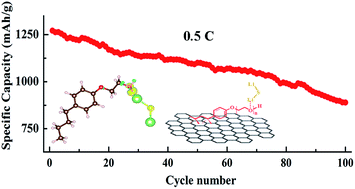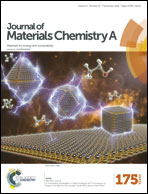Enhancing the performance of lithium–sulfur batteries by anchoring polar polymers on the surface of sulfur host materials
Abstract
Lithium–sulfur (Li–S) batteries are attracting intense interest due to their high theoretical energy density and relatively low cost, but their practical applications are still hindered by quick capacity decay owing to the polysulfide shuttle effect. Based on the first-principles calculations, it has been found that the oxygen-containing functional groups (hydroxyl and ether group) of Triton X-100 are able to carry out effective trapping of lithium polysulfides by strong Li–O interactions, demonstrating a feasible strategy to alleviate the shuttle effect. Therefore, herein we present a facile and scalable synthetic route to suppress the polysulfide shuttle effect and further improve the overall performance of Li–S batteries through anchoring inherently polar polymer Triton X-100 on the surface of carbon materials. The results show that the MAC/S composite delivers a high discharge capacity of 1432 mA h g−1 in the first cycle, a capacity retention of 76% after 50 cycles at a rate of 0.2C with an excellent coulombic efficiency of 95% and a reversible specific capacity of above 889 mA h g−1 after 100 cycles at a rate of 0.5C with a low capacity decay of 0.3% per cycle.


 Please wait while we load your content...
Please wait while we load your content...